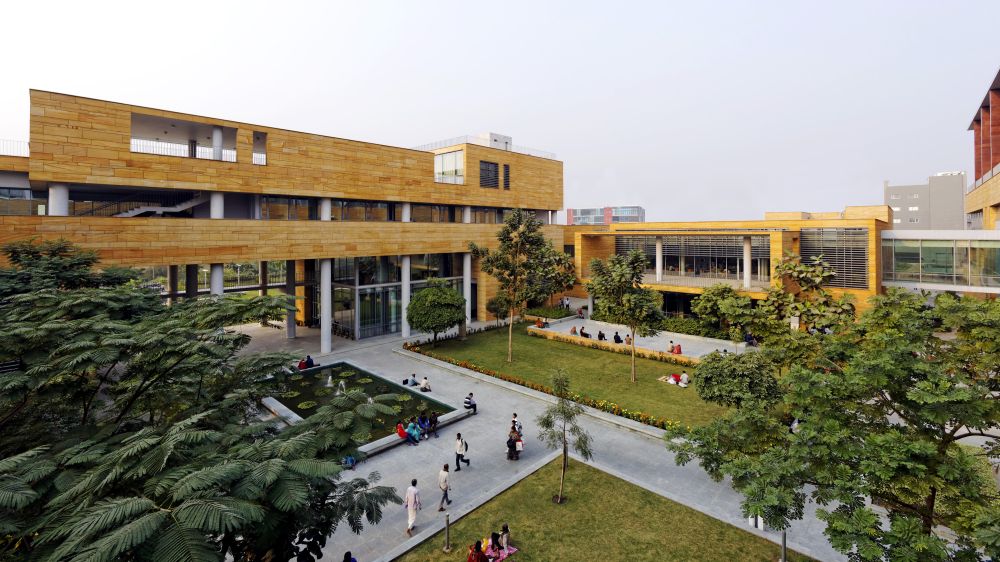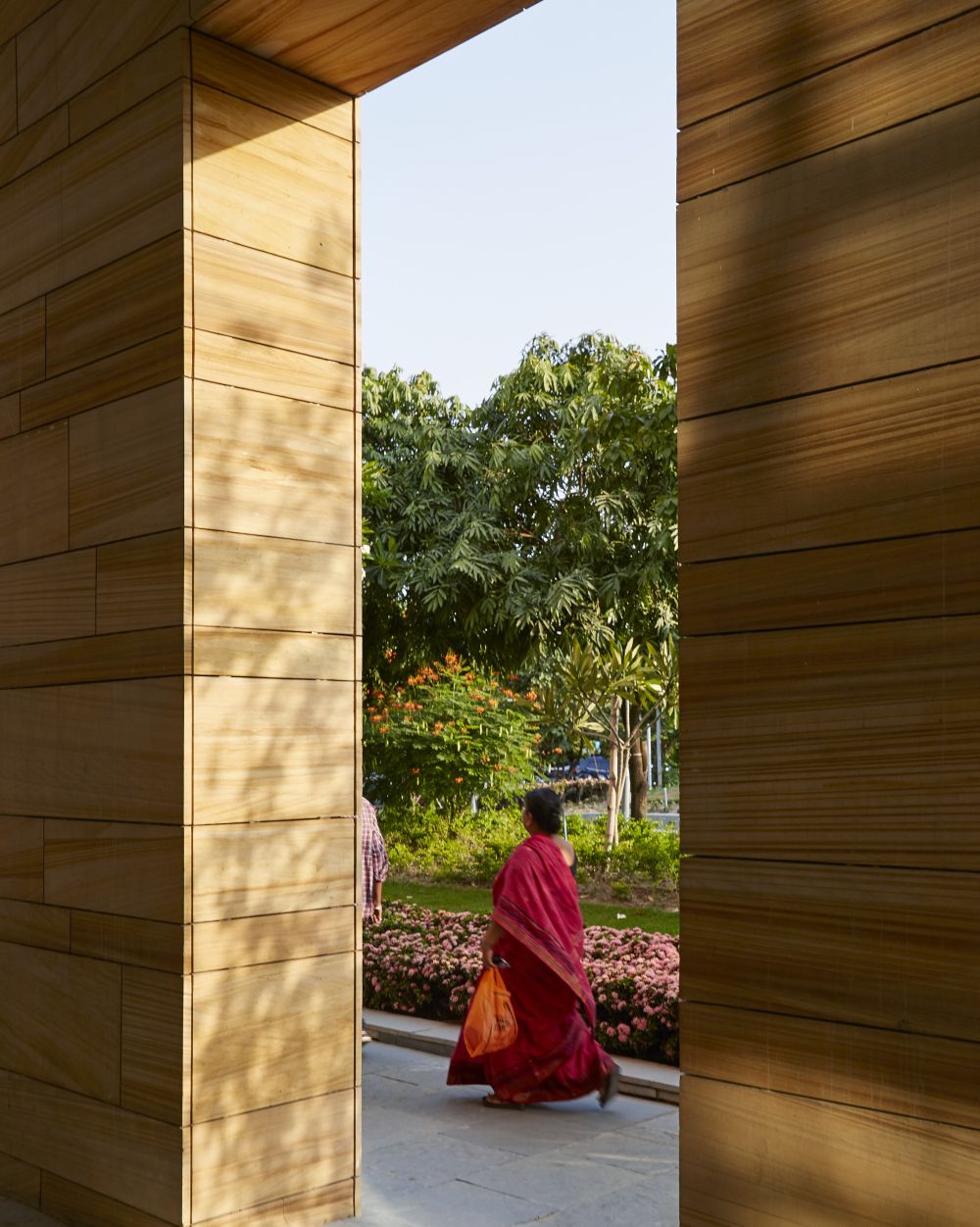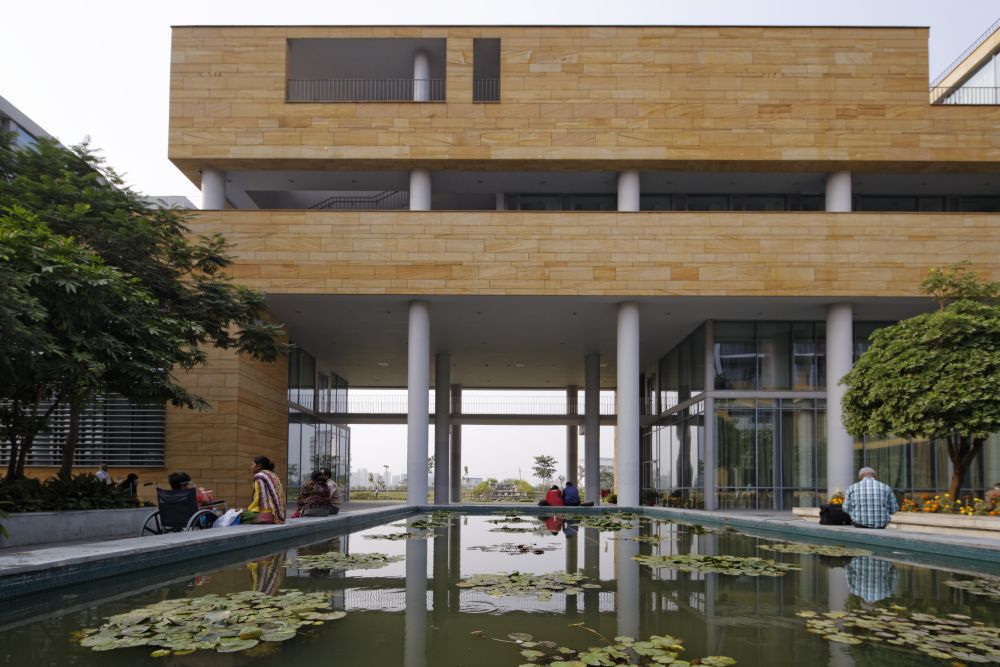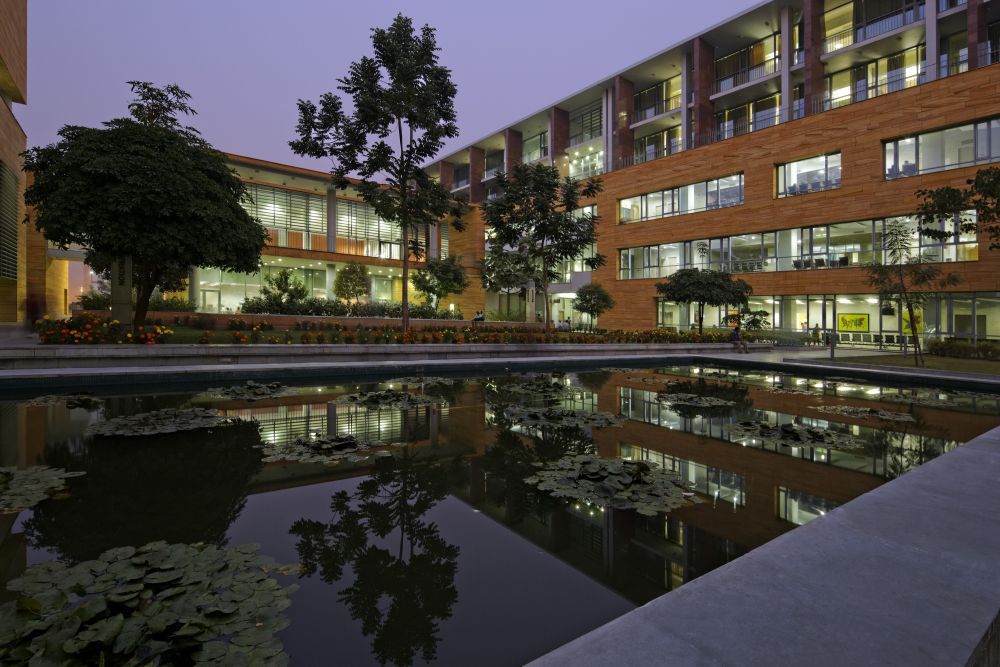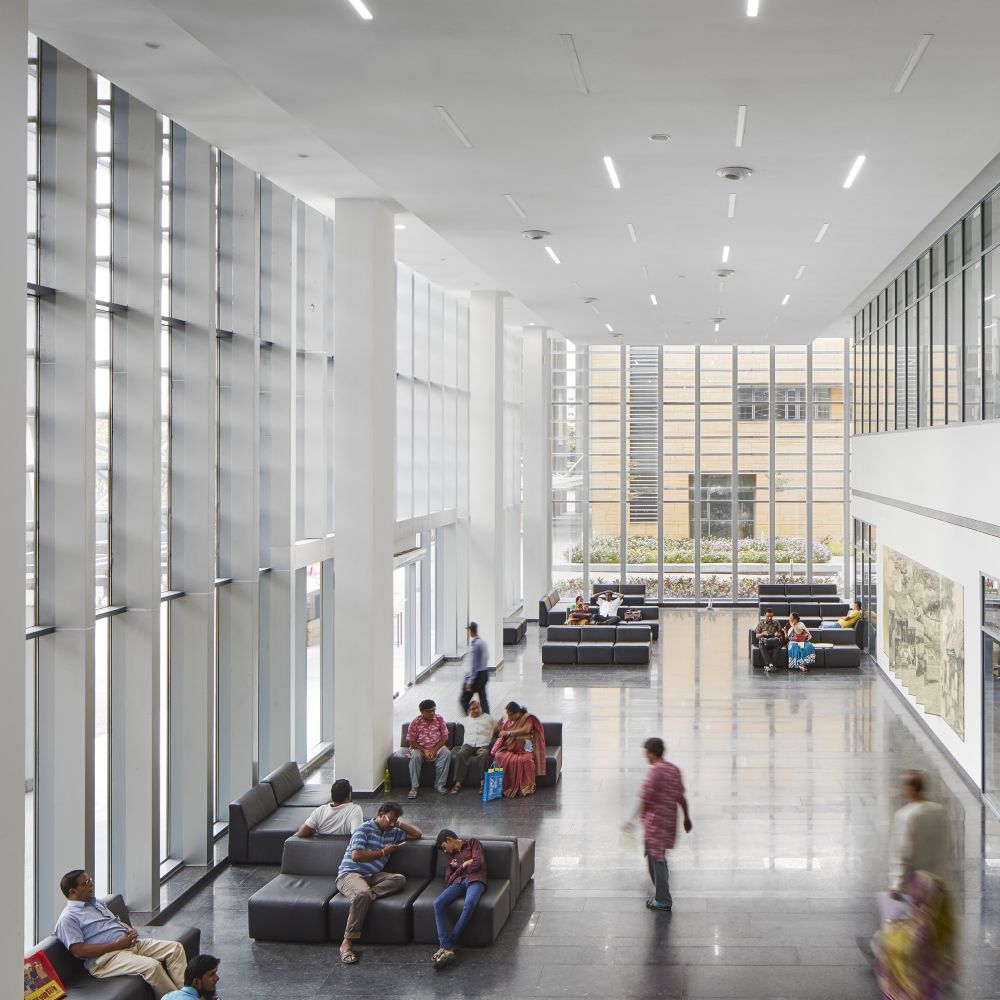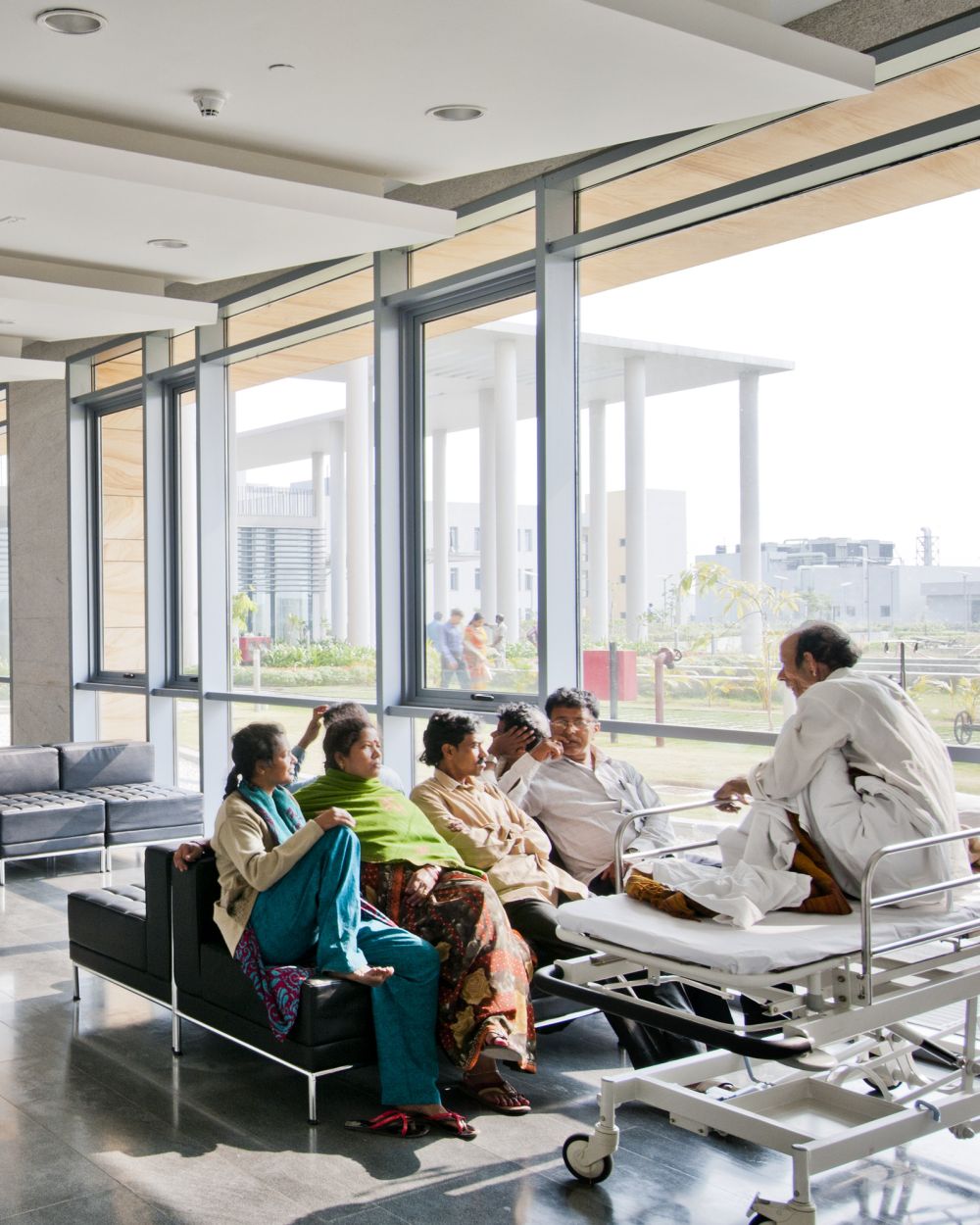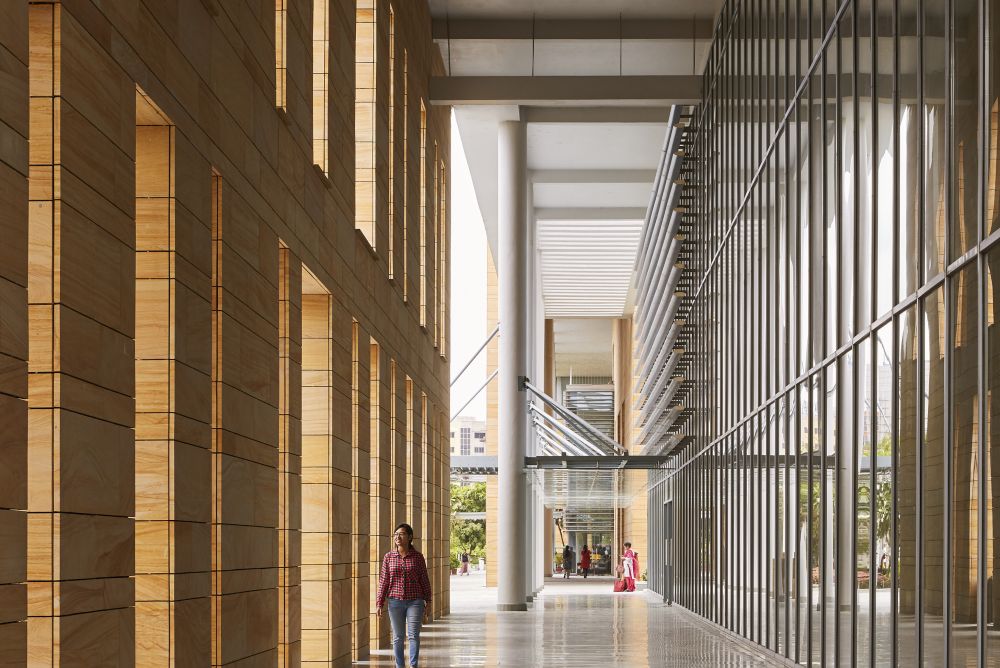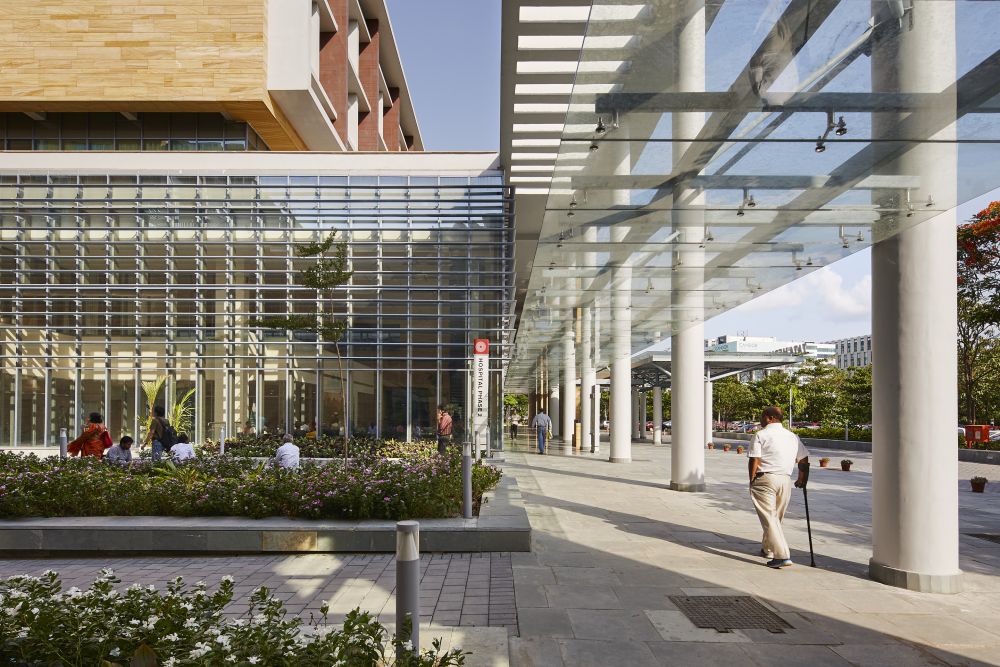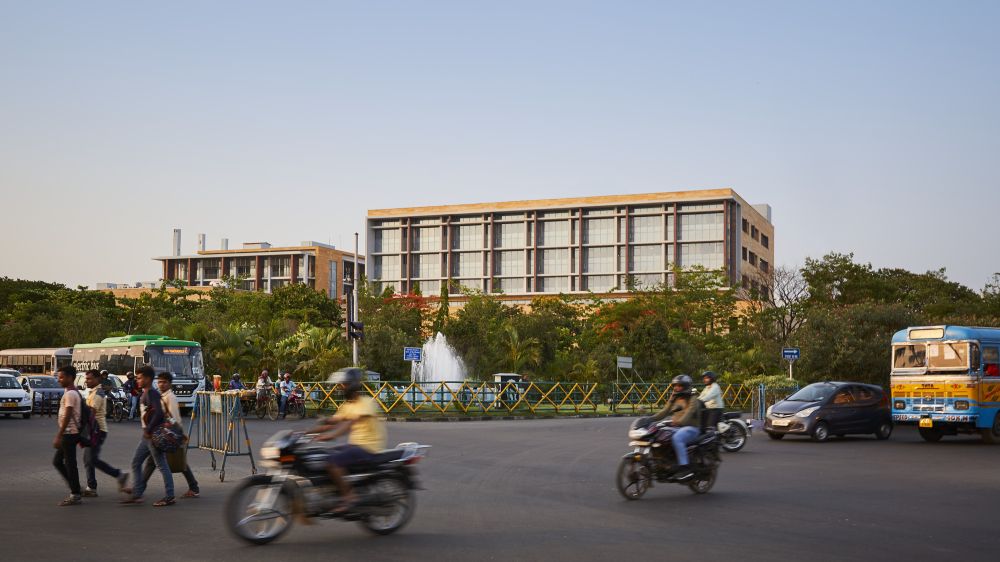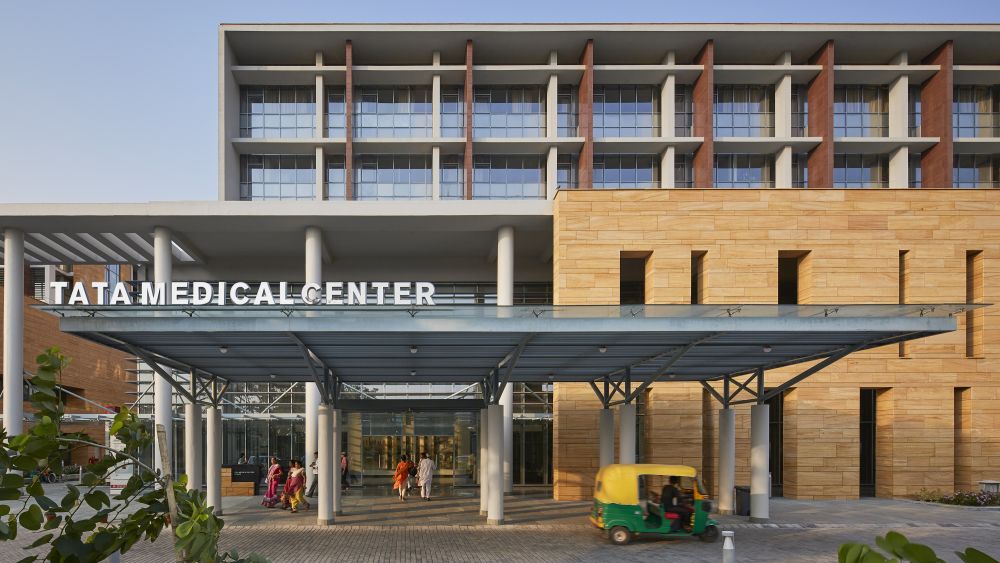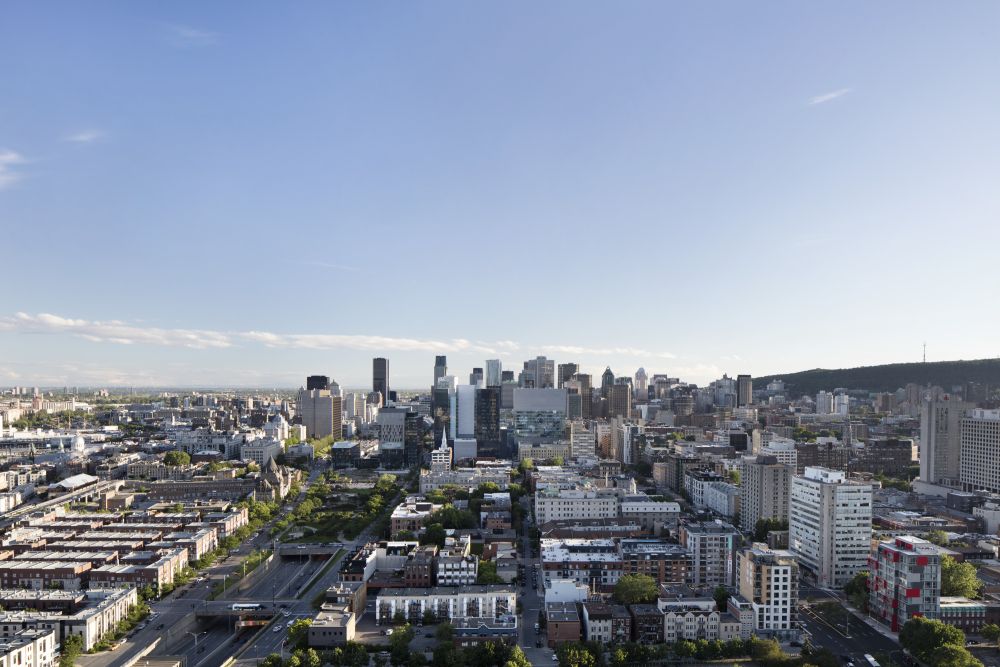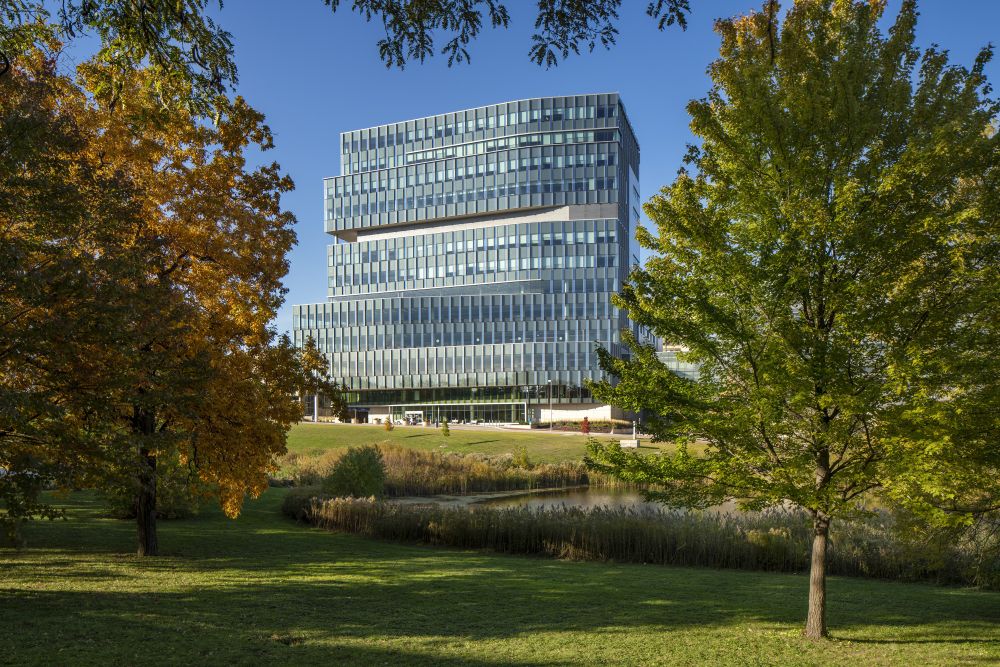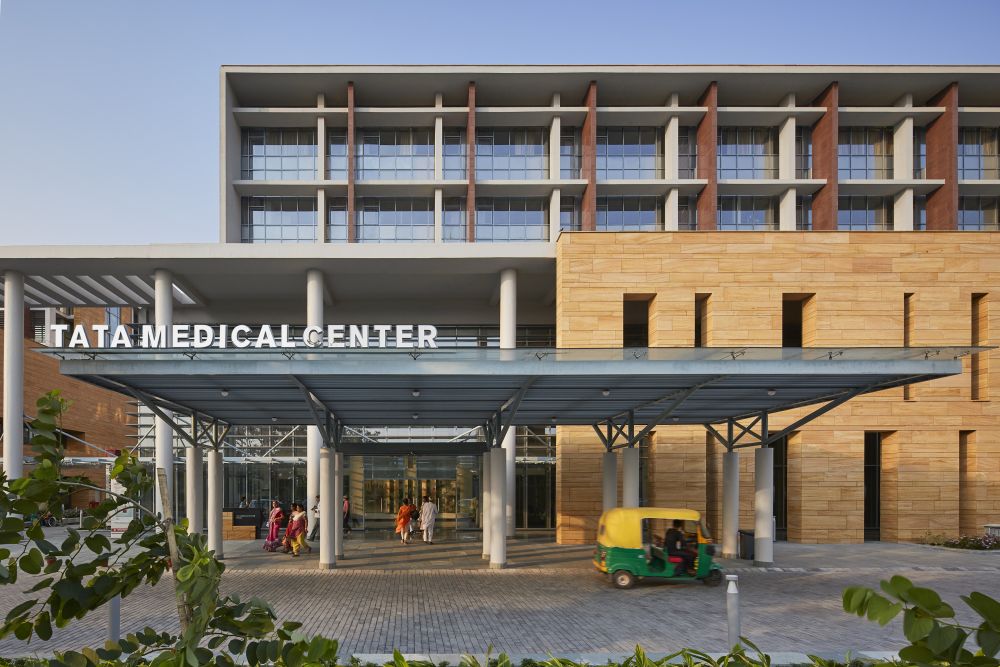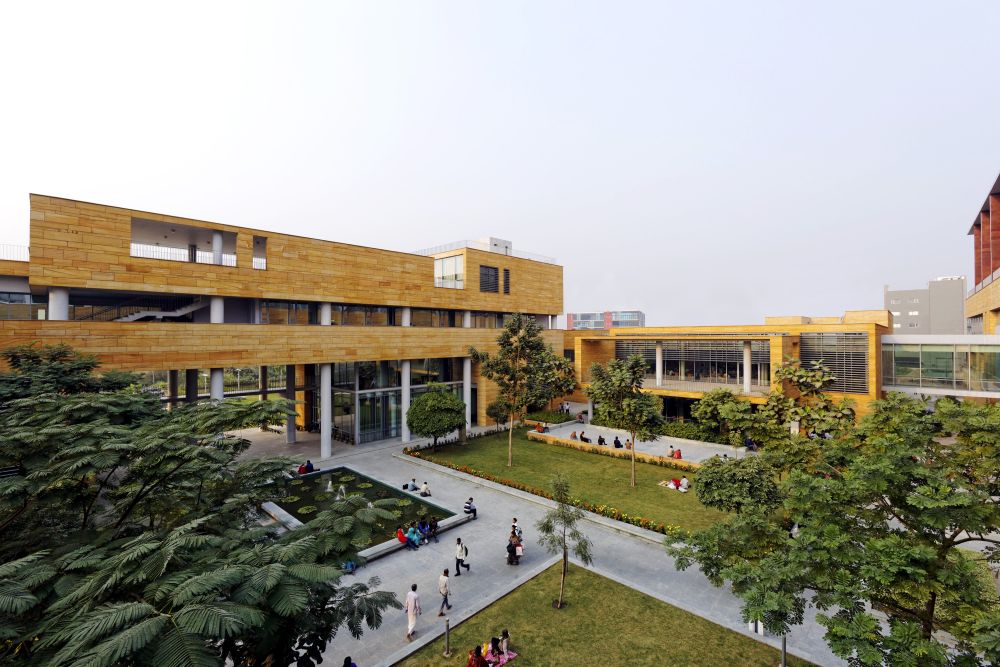Tata Medical Center
Expanding access to cancer care in India
- Client
- Tata Medical Centre Trust
- Location
- Kolkata, West Bengal, India
- Size
- 2,500,000 square feet
- Status
- Completed
Cancer cases and deaths in India have doubled from 1900 to 2016, and a main cause for this is the lack of access to cancer treatment in the second most populous country in the world. The Tata Medical Center was created to change this reality, acting as a beacon of hope for patients in India and across Southeast Asia.
Almost immediately after the center opened phase one in 2012, the demand for its services far outweighed the capacity of its 150-bed hospital and outpatient facility. The director of the medical center, Dr. Mammen Chandy, stated the center had to turn away 30 percent of patients because of lack of space and that some patients waited two months for surgery. The second phase, which opened in early 2019, added 240 beds as well as an education block for visiting faculty and students, making it a prominent academic medical research center.
Both phases were designed to improve the patient experience, bearing in mind people would be traveling from all over the region to receive potentially life-saving treatment. The natural progression from public to private spaces through use of courtyards and outdoor “hallways” gives the hospital a campus feel, uplifting the spirits of pediatric and adult patients as they cope with the physical and psychological stresses of a cancer diagnosis.
Tata’s commitment to providing care for all patients—more than 50 percent of the hospital’s inpatient beds provide free treatment—makes it a critical changemaker in providing early cancer detection and access to treatment in this rapidly changing part of the world.
Testimonials
Already, clinical research done by Tata Medical Center's clinicians has helped increase childhood cancer survival rates in Kolkata from 65 percent in 2014 to 80 percent in 2019.
Built to work with the climate
With summer temperatures commonly exceeding 104 degrees Fahrenheit, more than nearly five feet of monsoon rains falling between June and September of each year, and seasonal dust storms, the climate demanded durable, authentic materials as well as traditional Indian architectural solutions for the Tata Medical Center's Cancer Hospital. A natural stone and concrete exterior was chosen not only to withstand the extremes of wetness, dryness, and heat but also to weather beautifully over time—and to look as if it has proudly stood there for centuries.
The building is carefully oriented to capture the prevailing winds, which change direction in summer and winter. Rain is harvested and stored in underground tanks for year-round irrigation of the gardens that are integral to the patient experience and to the creation of the Tata Medical Center’s healing environment.
